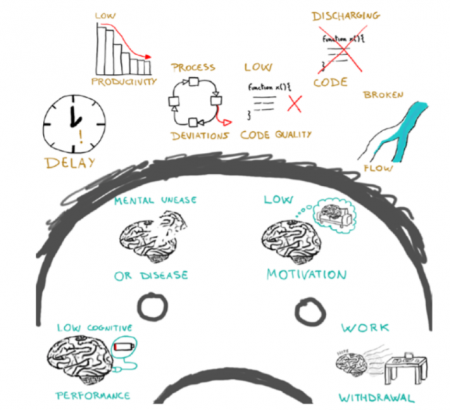“One of the most profound consequences of the information age is the ability to do so many things while ignoring location.”
– Martin Fowler, Remote versus Co-located Work.
COVID-19 caused companies around the world to WFH. With the abundance of blogs on team collaboration WFH during COVID-19, we at SeaLights noticed that there is a lack of information specifically geared towards executives and managers of engineering teams. We know that maintaining a quality product and preserving velocity are top priorities for executives, but WFH has thrown a whole new set of challenges into the equation.

For some companies, like GitLab, WFH is not a new concept. Since COVID-19, many more enterprise companies like Twitter, Facebook, and Microsoft, have joined the WFH ranks. Various companies have already returned to their offices but because some will continue to WFH until the foreseeable future, we need to understand the challenges of engineering teams working remotely.
SeaLights surveyed enterprise executives about how they manage their WFH teams and overcome their obstacles during this time. Those we surveyed manage an average of 66 employees, which include developers and team leaders. The results helped us better understand how managers are facing these new challenges head-on and how some are even using WFH to their advantage.
Increased Visibility
Many executives used dashboards before COVID-19, but now they report a need to ensure that they are updated more often, and even contain new metrics, in order to accurately track their teams’ progress. This allows for improved visibility between team members and better team collaboration.
Arik Yelovich, Senior Software Engineering Manager at Credit Karma, stated: “As we work remotely, we are making a constant effort to improve tracking and visibility through more detailed comments and updates to ensure accurate reflections of day-to-day work.”
Improved Team Communication
Before COVID-19, most team communication was face to face. When teams started WFH they needed to adjust their communication methods and adapt to the entire team working remotely. An HBR study from 2018 gives a great outline of how to use remote communication as an advantage over co-located teams: Remote teams demand new collaboration skills due to the new digital communications. Even when teams are co-located, the tone of a text or the formality of an email is left wide open to interpretation. These misinterpretations create anxiety that can become costly, affecting morale, engagement, productivity, and innovation.
Based on our survey, executives improved their team communication through:
- Video Meetings: It was reported that daily stand-ups and scrum meetings are all held via various video platforms.
Bret Gregory, Director of Software Engineering at LexisNexis, mentioned that “video has been an incredible way to make sure we break down some of the walls to remote work.”
- Chat forums: To make up for face to face communication, teams have increased their time spent communicating on chat forums.
A Head of Platform Engineering at an enterprise Computer Software company stated that “We have emphasized the need to work harder at communication within and across teams at this time, as some people can become isolated outside of the office environment.”
Software Quality: Still a Top Priority
87% of those surveyed reported that software quality was always a priority and this hasn’t changed since WFH.
To support this important finding, a Software Development Manager from an enterprise software company said: “Not as a result of working from home, but to better support our product roadmap, we have designed a new quality strategy looking at shifting testing left, reducing manual testing through more automation, and increased visibility over metrics.”
Bret Gregory, Director of Software Engineering at LexisNexis, added: “The measurements for quality don’t change because we are remote. The high-quality standards still need to be met. The teams may need to adjust their approach to meeting the quality expectations through better communication, sharing responsibilities, etc.”
Impact on Developer Productivity
There is a constant debate about productivity when working from home. The latest study (April 2020) from the State University of New York shows that employee productivity can increase because of the flexibility of working from home. However, managers need to be aware of the challenges of working from home in order to help their employees overcome them.
Because software teams had the ability to WFH when necessary before COVID-19, 70% of the executives we surveyed reported no real change in their teams’ productivity. They did discuss needing to be more flexible in terms of working hours to accommodate their employees and their families.
Melissa Benua, Director of Engineering at mParticle, said that very early on she saw a significant increase in her teams’ productivity and gave each employee an additional mandatory day off to ensure they were also spending quality time with their families. As a result, she saw an even greater increase in their productivity.
Happy Developer = Productive Developer
Although it’s intuitively obvious, a recent study (Rethinking Productivity in Software Engineering, 2019) scientifically proves that happiness is beneficial for developers’ productivity and well-being. Happy developers solve problems better, without interruption, and are more motivated and engaged in their work.
The research shows that developer unhappiness was mostly caused by technical factors related to the product and the development process. This means that managers need to be aware of the importance of strategic architecture and workforce coordination. The study also pointed to factors related to the distribution of information among teams and team communication (specifically about software quality and software construction) as strong contributors to unhappiness among developers.
Furthermore, the data we collected with our SeaLights survey also referenced the significance of developers’ well-being WFH. A Software Engineering Director at an enterprise semiconductors company mentioned how important coordination is in order to encourage team satisfaction and said to make sure there are “clear roles and responsibilities in the team. Clarify requirements with stakeholders to ensure team focus and decrease changes.” Additionally, a Head of Platform Engineering at an enterprise computer software company highlighted team communication and said “You need to ensure your teams are communicating and collaborating.”

Consequences of unhappiness while developing software. Available as CC-BY from Graziotin et al.
How Can Managers Measure Their Developers’ Productivity when WFH?
Organizations have continued to search for better and easier ways to measure developer productivity, and this is especially important now when teams are WFH. Developer productivity is notably problematic to measure because developers engage in other development tasks beyond just writing code, which in the long run can actually help with team productivity as a whole. For example, if they engage in a variety of social tasks such as mentoring or coordination, it can have a significant impact on the overall team or organization output.
Even if organizations measured developer productivity just based on code contributions, it misses critical aspects of code such as quality, or maintainability. These aspects are extremely difficult to measure without advanced analytics. Different code and test quality metrics can help measure productivity but they can also encourage teams to communicate better and make smarter development and release decisions, which will directly impact their productivity, especially WFH.
In these uncertain times, it is the manager’s responsibility to ensure communication and collaboration in order to keep their teams’ productivity and motivation high. Different metrics can help managers stay on track and keep their teams focused and happy during COVID-19 and beyond.
__________________________________________________________________________
About SeaLights
SeaLights is an AI/ML-driven Quality Intelligence Platform that enables companies to improve their code quality, while at the same time increasing release velocity. By applying advanced analytics across the software development and testing life cycle, SeaLights helps in identifying quality risks as code gets developed, improves true coverage of business processes by tests, and optimizes test effort by suggesting impact based tests. This results in shorter test cycles, faster time to market, reduced costs, and improved quality, all without compromising on test coverage.